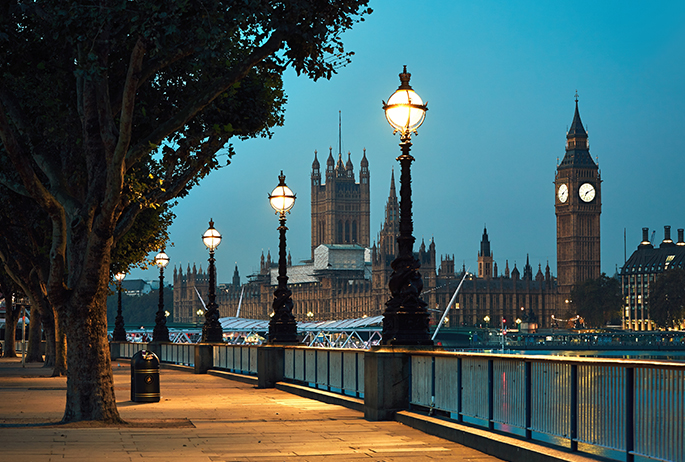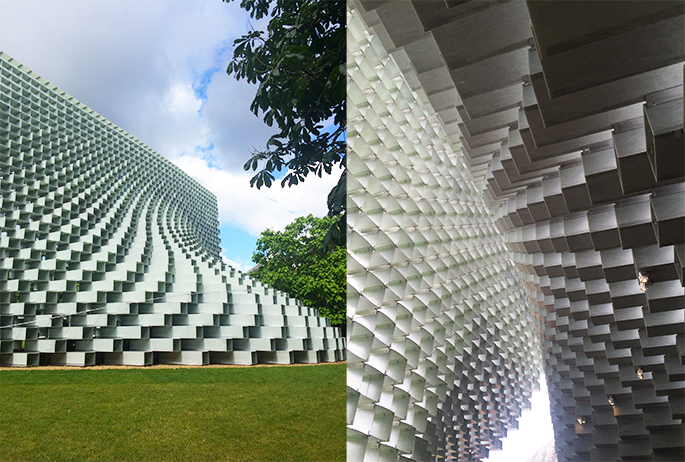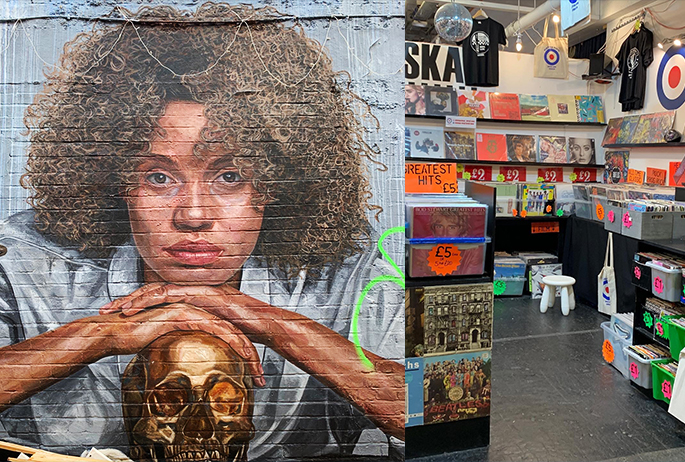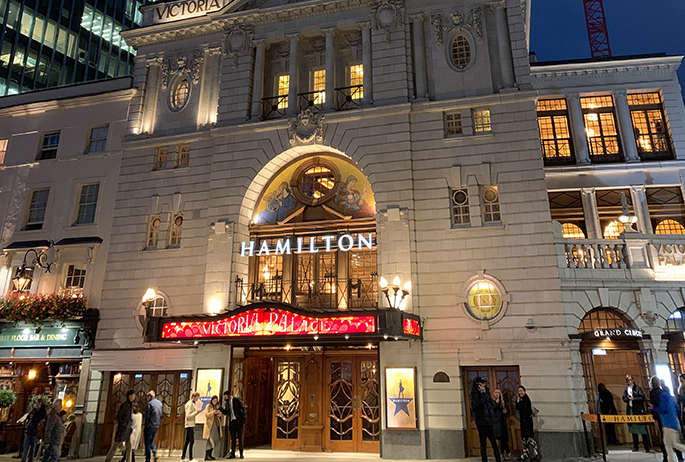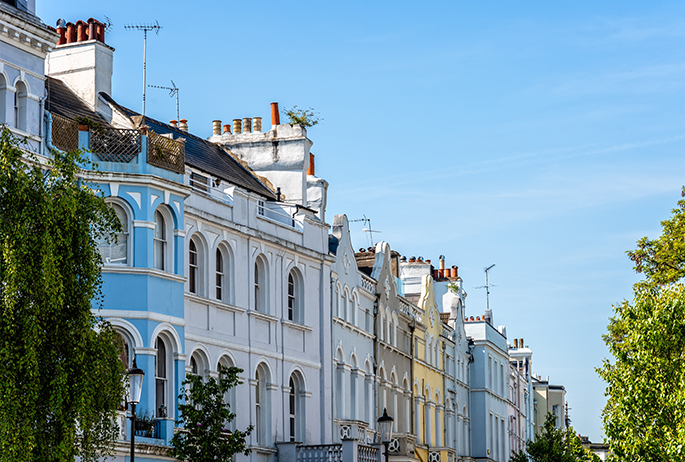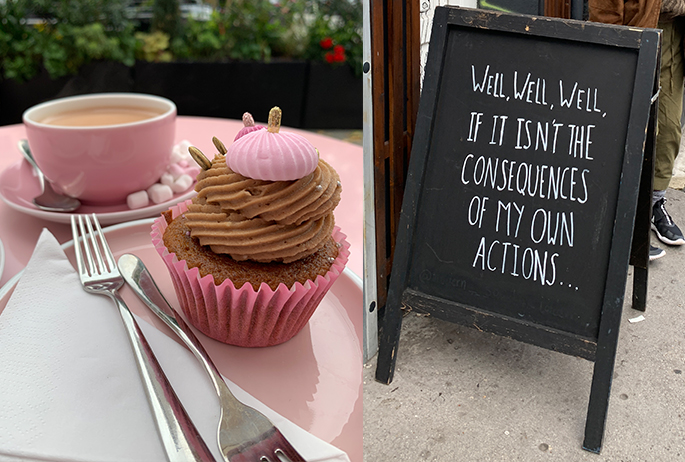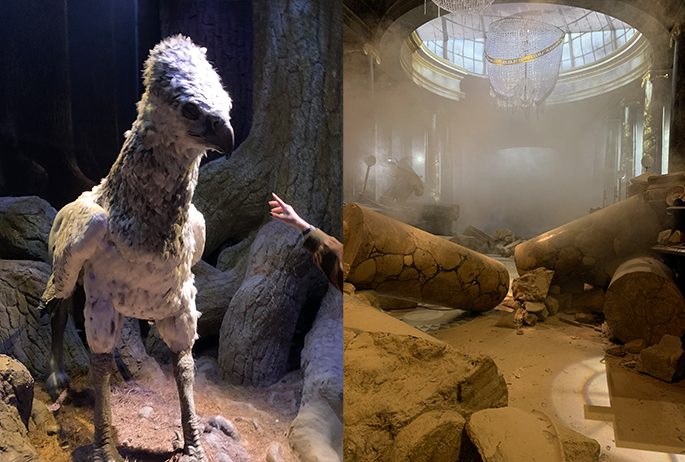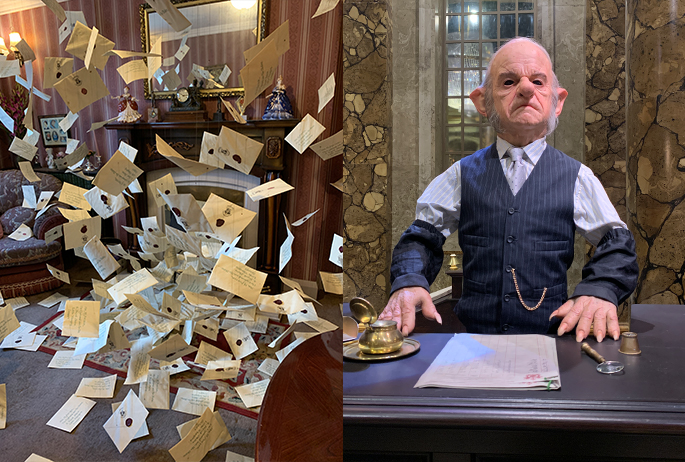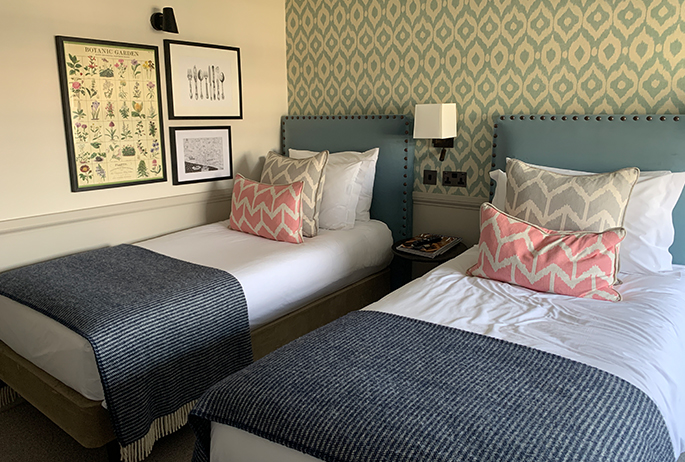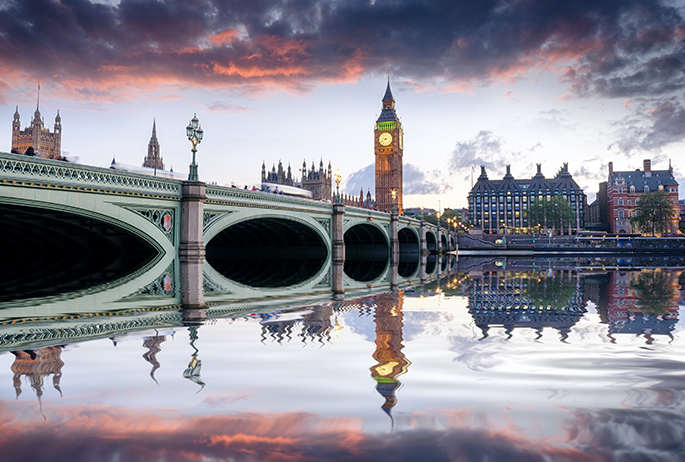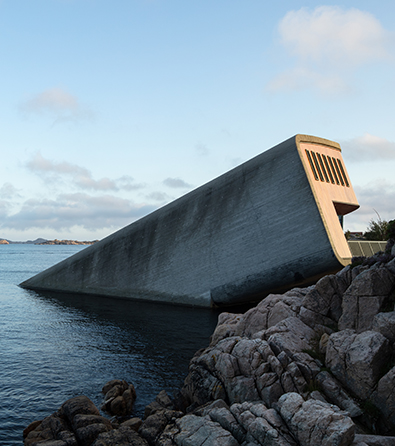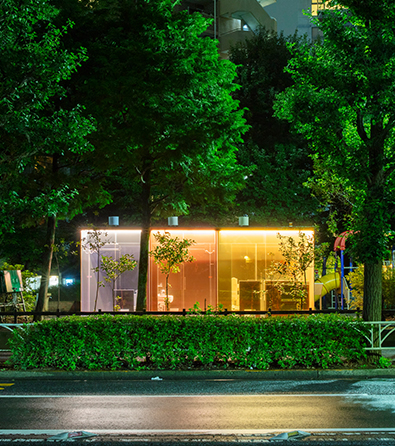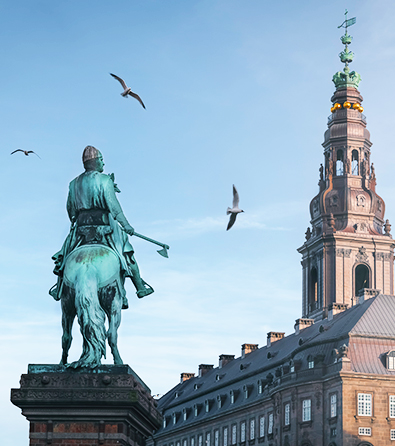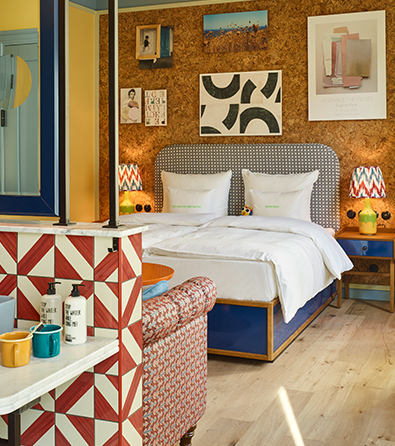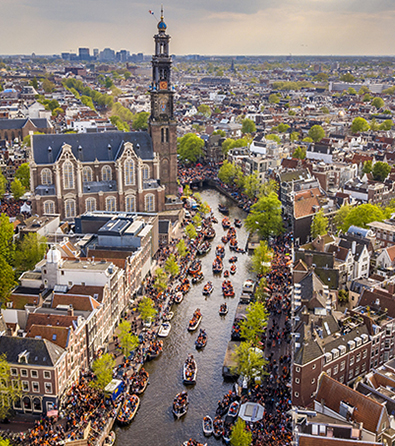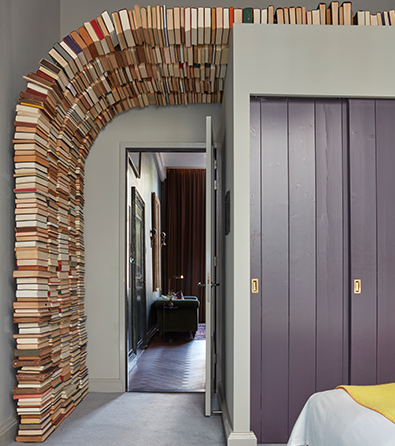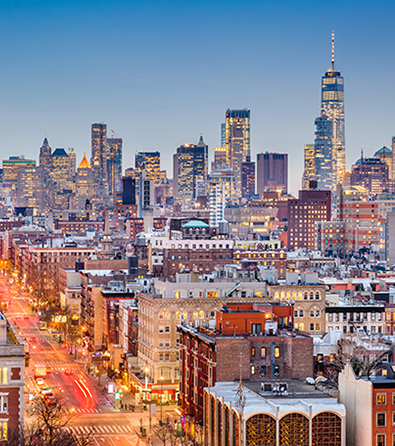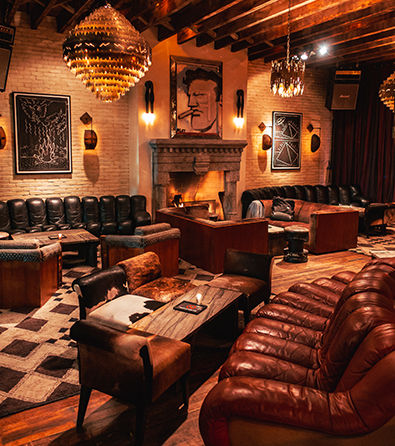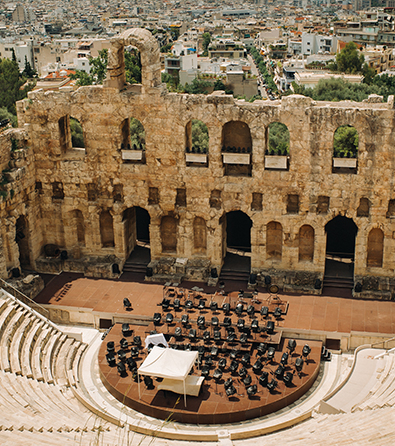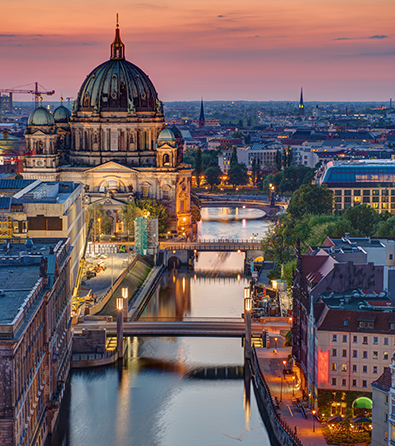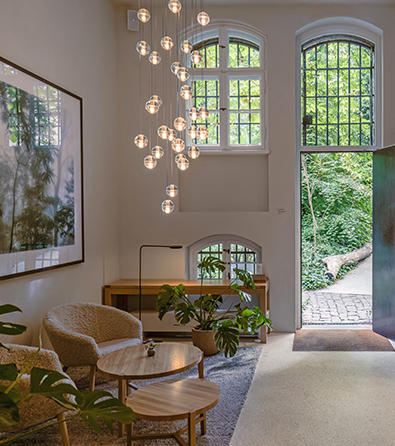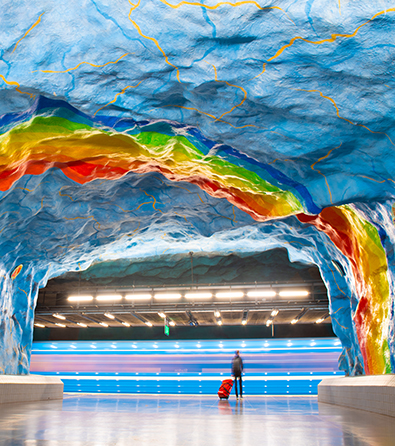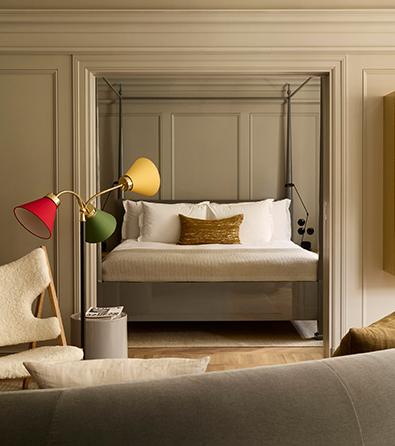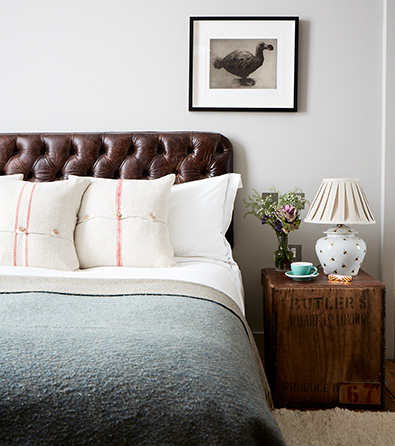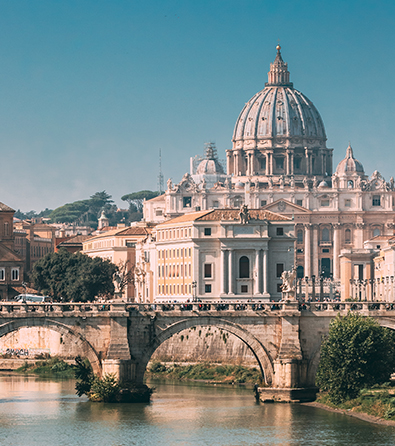London, one of the world’s most influential cultural capitals, is a city where centuries of artistic tradition meet contemporary innovation. This cultural travel guide maps the city’s best museums and galleries, design and architecture highlights, West End and fringe theatre, street art hotspots, craft and concept stores, and seasonal festivals. Use it to plan smart routes between neighborhoods like South Kensington, Bankside, Mayfair, Shoreditch and the South Bank so you can see more in less time.
To access our exclusive London Treasure Map, simply click the attached link and become a Culture Treasures member. The map pins every place in this guide and adds bonus cafés, boutiques and cultural venues. Planning your stay? Explore our guide to the best design hotels in London, along with our curated urban travel essentials and long flight essentials for a comfortable journey.
Art Museums:
Tate Modern (Bankside / Southwark)
Why go: The UK’s leading museum for modern and contemporary art in a dramatic former power station, with free collection displays and unforgettable Turbine Hall commissions.
Tip: Ride the lifts to Level 10 in the Blavatnik Building for Thames views, then walk across the Millennium Bridge to St Paul’s. Book special exhibitions in advance; weekends get busy.
Housed in the repurposed Bankside Power Station, Tate Modern presents international art from 1900 to today. The original brick colossus, by architect Sir Giles Gilbert Scott, with a 99-metre chimney, was built after WWII and powered London until its 1981 closure. Herzog & de Meuron led the conversion, and the museum opened in 2000; a major expansion over the former oil tanks opened in 2016 and is now known as the Blavatnik Building. Tate Modern is part of the Tate family alongside Tate Britain, Tate Liverpool, and Tate St Ives.
Wellcome Collection (Euston / 183 Euston Road)
Why go: Free museum and library exploring where art, health, and science meet, thought-provoking exhibitions plus a research library for the incurably curious.
Tip: Check the events calendar for talks and late openings. The library keeps its own hours and usually requires a quick registration for deeper access.
Founded on the collection of pharmacist-entrepreneur Sir Henry Wellcome, the venue mixes historic medical objects with contemporary art to examine how we understand bodies, care, and culture. Expect changing shows (alongside galleries like Being Human), a calm Reading Room, café, and bookshop—ideal for a reflective stop between bigger museum days. For a deeper dive into its offerings and history, please refer to our in-depth article about the Wellcome Collection.
Victoria and Albert Museum (South Kensington / Cromwell Road)
Why go: The world’s leading museum of art, design and performance. 5,000 years of creativity from fashion and furniture to sculpture, ceramics and photography.
Tip: General admission is free; book paid exhibitions ahead. Enter via Exhibition Road for a calmer start and don’t miss the Cast Courts, Jewellery Gallery and the Raphael Cartoons.
Founded in 1852 as the Museum of Manufactures in the wake of the Great Exhibition, the institution moved to South Kensington in 1857 (then called the South Kensington Museum) and was renamed the Victoria and Albert Museum in 1899. Today it stages major temporary shows alongside its vast permanent holdings, with research, education and design literacy still central to its mission.
The National Gallery (Trafalgar Square / Westminster)
Why go: One of the world’s great collections of Western painting from about 1250 to 1900, with masterpieces by Leonardo, Raphael, Titian, Velázquez, Rembrandt, Turner, Van Gogh, and Monet.
Tip: General admission is free. Book paid exhibitions ahead. Start in the Sainsbury Wing for early Italian works, then loop to the 18th–19th century rooms upstairs for Turner and the Impressionists.
Founded in 1824 when the government bought John Julius Angerstein’s 38 paintings, the Gallery first opened on Pall Mall before moving in 1838 to William Wilkins’s purpose-built home on Trafalgar Square. The collection has grown to more than 2,000 paintings and is arranged by school and period, so you can trace the story from medieval altarpieces to the color and light of the 19th century. Daily talks and free guided highlights help you navigate the hits without rushing.
The British Museum (Bloomsbury / Great Russell Street)
Why go: A world-class museum of human history and culture, with highlights like the Rosetta Stone, the Parthenon Sculptures, Egyptian mummies, and Assyrian reliefs.
Tip: General admission is free, book a timed ticket for smoother entry. Consider Friday late openings, and use the Montague Place entrance when it’s busy.
Founded by Act of Parliament in 1753 (from Sir Hans Sloane’s collection) and opened to the public in 1759, the British Museum now holds around eight million objects spanning the globe and millennia. Its Great Courtת covered by Foster + Partners’ vast glass roof, links major galleries and makes navigating easier. Expect a chronological sweep from ancient Egypt and Mesopotamia to Greece and Rome and beyond, plus rotating special exhibitions and frequent free talks.
Art Galleries:
Saatchi Gallery (Chelsea / Duke of York’s HQ, King’s Road)
Why go: Big, rotating contemporary art shows with a focus on new voices and timely themes.
Tip: Exhibitions change often and many are ticketed. Combine with a stroll down King’s Road or Sloane Square.
Founded on Sir Charles Saatchi’s contemporary collection and now a charity, the gallery presents large-scale, media-savvy exhibitions that spotlight emerging artists and global trends in visual culture.
White Cube Bermondsey (SE1 / 144–152 Bermondsey Street)
Why go: London’s flagship “white box” for cutting-edge exhibitions in vast, minimal galleries.
Tip: Pair with a walk along Bermondsey Street for cafés and design shops. Also check the smaller White Cube at Mason’s Yard in St James’s.
Bermondsey’s warehouse-scale spaces suit ambitious installations, video, and sculpture, while Mason’s Yard offers a compact central-London counterpart with crisp, focused shows.
Serpentine – South & North (Kensington Gardens)
Why go: Free contemporary art across two sister galleries in the park, plus the annual summer Pavilion commission.
Tip: Visit both spaces – South is the original 1930s tea pavilion, North is the restored Magazine building with a contemporary extension. The Pavilion typically runs June to October.
Serpentine South and Serpentine North stage international exhibitions, talks, and commissions. Each summer a temporary Pavilion by an invited architect turns the lawn into one of London’s most-watched design moments.
Whitechapel Gallery (East End / 77–82 Whitechapel High St)
Why go: A historic engine of contemporary art with forward-looking shows and a century-plus track record of firsts.
Tip: Start early, then loop Brick Lane and Spitalfields for cafés and street art.
Founded in 1901, Whitechapel has premiered landmark exhibitions and today presents rotating programs across photography, film, sculpture, and installation. Expect sharp curation and timely themes.
Gagosian (Mayfair & King’s Cross)
Why go: Two London spaces for blue-chip contemporary art, from museum-scale installations to focused solo shows.
Tip: Pair Mayfair’s Grosvenor Hill with a visit to Britannia Street near King’s Cross for larger works.
The Mayfair gallery shows headline artists in a pristine setting, while Britannia Street’s warehouse proportions suit immersive sculpture, painting, and video.
Pace Gallery (Mayfair / 5 Hanover Square)
Why go: Global gallery known for innovation across media, with a strong program of contemporary and postwar art.
Tip: Check for media-heavy installations and performance programs that change the space.
Pace’s London home offers crisp exhibitions by established and emerging artists, often exploring technology, light, and form.
Victoria Miro (Islington / 16 Wharf Road)
Why go: Canal-side gallery with museum-scale rooms and a waterside garden, championing leading contemporary artists.
Tip: Check both buildings on site; schedules can be split across spaces.
Founded in 1985, the gallery consolidates its London exhibitions at its expansive N1 location, known for ambitious installations and painterly shows.
Royal Academy of Arts (Piccadilly / Burlington House)
Why go: Artist-led institution with major exhibitions year-round and the famous Summer Exhibition.
Tip: Book the blockbuster shows in advance and leave time for the historic John Madejski Fine Rooms when open.
The RA combines headline temporary exhibitions with an annual open-submission Summer Exhibition, keeping dialogue between artists and audiences at the center.
180 Studios (The Strand / 180 The Strand, WC2)
Why go: Immersive exhibitions and installations inside an iconic Brutalist complex, a hub where visual art, fashion, music, and film collide.
Tip: Most shows are timed and ticketed; weekday mornings are quieter. Pair your visit with Somerset House or a Thames walk over Waterloo Bridge. Restaurants on site make it easy to linger.
A creative engine for London, 180 Studios transforms industrial spaces into large-scale galleries and production rooms. Expect ambitious, multi-sensory shows and collaborations with leading photographers, filmmakers, designers, and musicians.
Hayward Gallery (South Bank / Southbank Centre)
Why go: Landmark Brutalist gallery known for major contemporary art exhibitions and bold installations.
Tip: Book ahead for headline shows. Combine with a South Bank stroll and check the outdoor sculpture terraces when accessible.
Opened in 1968 and part of the Southbank Centre, the Hayward is built for experimentation, raw concrete spaces, lofty galleries, and roof-lighting restored in a 2015–2018 refurbishment that brought natural daylight back into the upper halls.
Newport Street Gallery (Vauxhall)
Why go: Damien Hirst’s free public gallery in a Stirling Prize–winning conversion, museum-scale rooms showing works from his collection and guest-curated exhibitions.
Tip: Check opening days and current shows before you go; it’s an easy add-on to a riverside walk toward Battersea.
Opened in 2015, the gallery occupies a row of former Victorian workshops reimagined by Caruso St John. The sequence of lofty spaces suits sculpture and large-format painting, with exhibitions that range across postwar and contemporary art.
Gasworks (Vauxhall / 155 Vauxhall Street, SE11)
Why go: Artist-led contemporary art space known for international residencies and free exhibitions that spotlight emerging voices.
Tip: Check dates, galleries open during exhibitions (typically Wed–Sun). Nearest stations are Vauxhall (Victoria line) and Oval (Northern line). Don’t miss Open Studios at the end of each residency cycle.
Founded in 1994, Gasworks combines a public gallery with studios for London-based artists and a rolling residency program for artists from around the world (part of the Triangle Network). Shows are compact, idea-driven, and often tied to work developed on site, with talks, workshops, and community projects rounding out the program. For a deeper dive into Gasworks, please refer to our in-depth article.
Design and Architecture:
Design Museum (Kensington / 224–238 Kensington High Street)
Why go: London’s museum for contemporary design across architecture, fashion, graphics, and product, set inside the former Commonwealth Institute. Free “Designer Maker User” display plus headline temporary shows.
Tip: Book big exhibitions in advance. Start on Level 2 for the free collection, then loop the atrium balconies. Pair with a walk in Holland Park nearby.
Founded in 1989 by Sir Terence Conran, the museum first opened at Shad Thames before relocating in 2016 to Kensington. The Grade II* listed 1960s building, originally by RMJM, was transformed for museum use by a team led by John Pawson, retaining the landmark roof and creating three times the gallery space. Today the museum mixes major ticketed exhibitions with talks, learning programs, and a permanent display that shows how design shapes everyday life.
Sir John Soane’s Museum (Holborn / 13 Lincoln’s Inn Fields, WC2A)
Why go: An architect’s dream house, three conjoined Georgian townhouses filled with lightwells, mirrors, hinged picture walls, and a world-class trove from antiquities to Hogarth. Seti I’s alabaster sarcophagus is the showstopper.
Tip: Free entry, usually Wed–Sun. Queues are common; arrive early and time your visit for the Picture Room panel openings.
Created by Sir John Soane as a teaching collection and preserved by an 1833 Act of Parliament “as nearly as possible” as he left it in 1837, the museum spans Nos. 12–14 Lincoln’s Inn Fields. Expect layered displays of architectural models and casts, Piranesi prints, Venetian views by Canaletto, and William Hogarth’s series A Rake’s Progress and An Election, all arranged to dramatize Soane’s experiments with space and natural light.
Serpentine Pavilion (Kensington Gardens / lawn by Serpentine South)
Why go: London’s annual summer architecture commission, free, photogenic, and different every year, by a leading architect invited to create a temporary public pavilion.
Tip: Typically open June to October; hours can vary with events and weather. Visit on a weekday morning, then see exhibitions at Serpentine South and Serpentine North across the bridge.
Launched in 2000 under director Julia Peyton-Jones (with Hans Ulrich Obrist), the Pavilion invites an international architect, typically one who hasn’t yet completed a building in the UK, to design a temporary structure for talks, performances, and everyday lounging in the park. Recent commissions include Theaster Gates (2022), Lina Ghotmeh (2023), and Minsuk Cho / Mass Studies (2024); the 2025 Pavilion is by Marina Tabassum. The project has become a bellwether for ideas about space, materials, and public life, well worth planning into a summer itinerary.
Design Concept Stores:
Dover Street Market (St James’s / 18–22 Haymarket, SW1Y)
Why go: Rei Kawakubo and Adrian Joffe’s temple of experimental retail, high fashion, streetwear, and one-off installations under one roof, plus Rose Bakery.
Tip: Go early on weekends; start at the top floor and work down. Exhibits and shop-fits change often, so it’s worth revisiting.
Relocated from its original Mayfair home, the London flagship occupies a landmark Haymarket building with six floors of constantly reimagined spaces. Expect seasonal capsules, artist interventions, and a gallery-like approach to display that turns shopping into a cultural visit.
LN-CC (Dalston / 18–24 Shacklewell Lane, E8)
Why go: Avant-garde multi-brand concept store known for immersive interiors and future-leaning fashion edits.
Tip: Hours can be limited; check opening days or book personal shopping. Look out for in-store events and installations.
Late Night Chameleon Café (LN-CC) pioneered the “retail as experience” idea in East London. The current space returns with striking set pieces and tightly curated collections, alongside a club-style area for launches and performances.
Toogood (Shoreditch / Redchurch Street – studio and pop-ups)
Why go: Sculptural furniture and unisex clothing by sisters Faye and Erica Toogood, blending craft, art, and utility.
Tip: Openings on Redchurch Street have often been by appointment or pop-up; check current access and hours before you go.
Toogood’s London presence has centered on Redchurch Street, where the studio has staged exhibitions and retail moments. Expect minimalist, tactile pieces and occasional collaborations that echo the brand’s gallery pedigree.
PINCH (Belgravia / 200 Ebury Street, SW1W)
Why go: Quietly luxurious British furniture and lighting, designed for longevity with natural materials and fine craft.
Tip: The showroom is compact but dense with detail, book an appointment if you want guidance on finishes and lead times.
Founded by Russell Pinch and Oona Bannon, PINCH refines classic forms into contemporary pieces that age gracefully. The Ebury Street showroom presents the full collection, from dining tables to upholstery and lighting.
Labour and Wait (Shoreditch & Marylebone / 85 Redchurch St E2; 48 Dorset St W1)
Why go: Timeless, utilitarian homewares and workwear sourced from traditional makers—functional design with enduring appeal.
Tip: The Redchurch Street shop gets busy; Marylebone is a good alternative. There’s also a small outpost inside Dover Street Market.
Established in 2000, Labour and Wait champions tools and objects made to last, from enamelware and brushes to Japanese stationery. Its edit favors honest materials and classic forms, with seasonal specials and occasional collaborations.
Theater:
National Theatre (South Bank / Upper Ground, SE1)
Why go: Three stages devoted to new writing, bold revivals, and world-class talent.
Tip: General entry is free. Book shows early, especially Fridays. The Olivier, Lyttelton, and Dorfman each feel different, so check seating plans.
Not a West End house but a riverside landmark, the National presents premieres and major revivals that often transfer to the West End or Broadway. Expect wide-ranging work plus talks, exhibitions, and river views.
Victoria Palace Theatre – Hamilton (Victoria / Victoria Street, SW1)
Why go: A restored West End jewel hosting the hit musical Hamilton.
Tip: Performances sell out. Try weekday matinees or same-day lottery. Arrive early to explore the ornate Edwardian interior.
Rebuilt and modernised behind its historic facade, the theatre is now best known for Hamilton, which continues its long London run with strong demand.
Shakespeare’s Globe (Bankside / 21 New Globe Walk, SE1)
Why go: Open-air Shakespeare in a faithful reconstruction of the Elizabethan playhouse.
Tip: Groundling tickets are the most atmospheric and the best value. Performances proceed in most weather, so dress accordingly.
Opened to the public in 1997 after decades of research and campaigning, the Globe offers productions that echo early staging practices along with tours, workshops, and an indoor Sam Wanamaker Playhouse season.
The Old Vic (Waterloo / The Cut, SE1)
Why go: Independent producing theatre known for star-led new work and inventive classics.
Tip: Check for Previews and Rush tickets. It is a short walk from Waterloo station and sits opposite the Young Vic for easy double bills.
Founded in 1818, the Old Vic built its reputation on Shakespeare and great actors. Today it pairs accessible pricing with high-profile seasons and community programs.
Off-West End & Fringe highlights:
Young Vic (Waterloo): Daring directors and fresh takes, with strong outreach and talent development.
Almeida Theatre (Islington): Studio-scale productions that often transfer, strong new writing and reimagined classics.
Arcola Theatre (Dalston): New writing and community focus in a former paint factory, with sustainability initiatives.
Bush Theatre (Shepherd’s Bush): Champion of new playwrights with intimate spaces and a lively bar.
Donmar Warehouse (Covent Garden): 250-seat powerhouse for inventive staging and top casts.
Gate Theatre (Notting Hill): International perspectives and politically engaged work in a compact venue.
Royal Court (Sloane Square): Premier home for new writing, from emerging voices to major breakthroughs.
Southwark Playhouse (Elephant & Castle & London Bridge): Mix of new writing, classics, and musicals across two sites.
Street Art:
Leake Street Graffiti Tunnel (Waterloo / SE1)
Why go: London’s longest legal graffiti wall, an ever-changing corridor of murals beneath Waterloo Station.
Tip: Go weekdays or early mornings for fewer crowds; evenings often have artists at work (mind the fresh paint).
About 300 meters long, Leake Street became a legal street-art zone after Banksy’s Cans Festival (May 2008). Since then it’s stayed in constant flux, with new layers appearing daily, great for photography and for seeing pieces evolve in real time.
Brick Lane Street-Art Loop (Shoreditch/Spitalfields, E1)
Why go: A dense pocket of large-scale murals, paste-ups, and stickers across a few walkable blocks.
Tip: Use Brick Lane as your spine, then wander Sclater St, Hanbury St, Grimsby St, and the Seven Stars Yard car park; walls change fast, so every visit is different.
Expect big name and local talent side by side. Hanbury Street has hosted ROA’s famous “crane” (status can change), Grimsby Street features STIK’s stick-figure “Screamers,” and Seven Stars Yard is a reliable hotspot with walls that refresh frequently.
Banksy in London (context & where/what to look for)
Why go: Understand the backstory before you chase specific walls, many originals no longer exist in situ.
Tip: Treat online “exact locations” with caution; focus on current pieces you can verify on the day, and remember some famous works live on only as prints or replicas.
Banksy’s Girl with Balloon first appeared in Shoreditch and at the South Bank by Waterloo Bridge; none of the original London wall pieces remain. One Nation Under CCTV was on Newman Street (Fitzrovia) and was painted over in 2009. Pulp Fiction (the banana guns) was near Old Street station and removed in 2007. Kissing Coppers is outside London, in Brighton, where the original was removed and a replica installed at the pub.
And Beyond:
Barbican Centre (City of London / Barbican Estate)
Why go: Landmark Brutalist multi-arts center for orchestral music, theatre, film, and contemporary art, plus a lush indoor conservatory.
Tip: Book headline shows early. Visit the Conservatory on its limited open days and explore the free Curve gallery; the lakeside terrace is great between events.
Opened in 1982 and designed by Chamberlin, Powell and Bon, the Centre anchors the 35-acre Barbican Estate. Venues include Barbican Hall (up to 1,949 seats), the Barbican Theatre (around 1,150), the studio-scale Pit (about 150), three cinemas (one 280-seat screen and two 153-seat screens), the Barbican Art Gallery, and The Curve. It’s the London Symphony Orchestra’s home, with regular seasons by the BBC Symphony Orchestra, and its Conservatory is London’s second-largest.
Warner Bros. Studio Tour London – The Making of Harry Potter (Leavesden / near Watford)
Why go: Walk real film sets from the Harry Potter movies, Great Hall, Diagon Alley, Forbidden Forest, Platform 9¾ with the Hogwarts Express, and the Gringotts Wizarding Bank expansion.
Tip: Tickets are timed and must be booked in advance. From London Euston take the train to Watford Junction, then the dedicated shuttle (about 15 minutes). Plan 3–4 hours on site; coach packages from central London are also available.
About 20 miles northwest of central London, the self-guided tour sits inside the working studio complex where much of all eight films were made. You’ll see original costumes and props, board the Hogwarts Express set and pose with a trolley “through” the wall, and walk the marbled hall of Gringotts. Expect behind-the-scenes effects reveals, backlot sets like Privet Drive, and treats such as Butterbeer at the Backlot Café.
Shoreditch (East End / E1–EC2)
Why go: London’s street-art heartland with indie boutiques, cafés, and a buzzing nightlife scene.
Tip: Come on a Sunday to pair murals with markets, Brick Lane Market and nearby Columbia Road Flower Market, then refuel at Boxpark. Nearest stations: Shoreditch High Street (Overground) and Old Street (Northern line).
Shoreditch blends constantly changing murals and paste-ups with creative retail and food culture. Use Brick Lane as your spine and wander side streets like Sclater and Hanbury for large-scale pieces, then dip into Boxpark Shoreditch, the shipping-container hub for pop-ups and street food. On Sundays, Brick Lane Market sprawls with vintage and global eats, while Columbia Road bursts with flowers a short walk away. It’s lively day and night, with bars, music venues, and late kitchens tucked along Shoreditch High Street, Redchurch Street, and Great Eastern Street.
Brick Lane Markets (Shoreditch / Old Truman Brewery & Brick Lane, E1)
Why go: East London’s busiest weekend market cluster, vintage fashion, makers, and an international street-food hall, plus daily vintage finds.
Tip: Sunday is the big day; arrive 10:00–11:00 to beat crowds. Loop Brick Lane Vintage Market (open daily), Backyard Market (weekends), and the Upmarket food hall (weekends). Look for The Rib Man on Sundays.
Centred on the Old Truman Brewery, the area bundles several markets and street stalls into one walkable loop. Expect racks of vintage clothing and accessories, independent designers’ jewellery and prints, and a deep bench of global bites inside the food hall and in nearby yards. Weekends buzz, while the underground Vintage Market runs seven days for thrifting any time.
Kynance Mews (South Kensington / SW7)
Why go: One of London’s most photogenic mews, arched entrances, setted lanes, and cascades of wisteria each spring.
Tip: Best for photos in late April to May when the wisteria blooms. It’s a residential street: go early, keep noise down, and don’t block doorways. Nearest stations: Gloucester Road and South Kensington.
Built as stabling for the Cornwall Gardens development and originally called Cornwall Mews, Kynance Mews runs between Gloucester Road and Launceston Place, marked by three Grade II–listed brick arches. Designed in the mid-19th century (architect Thomas Cundy III), the mews has evolved into a coveted address while retaining its village feel, hence its “Insta-famous” status when the wisteria and Virginia creeper flare across the facades.
St Dunstan-in-the-East (City of London / EC3R)
Why go: A bomb-damaged medieval church reborn as a pocket garden, ivy-clad walls, traceried windows, and Wren’s elegant spire create one of London’s most atmospheric hideaways.
Tip: Go early on weekdays before the lunch crowd. Sit by the central fountain and pair your visit with a walk to the Sky Garden or the Tower of London. Nearest stations: Monument and Tower Hill.
Founded around 1100, the church was repaired after the Great Fire of 1666; Sir Christopher Wren later added its distinctive (Gothic-styled) steeple between 1695 and 1701. Structural problems led to a near-complete rebuild in 1817–21 by David Laing, retaining Wren’s tower. The Blitz of 1941 left the walls and spire standing; rather than rebuild, the City opened the ruins as a public garden in 1971, a serene, photogenic oasis amid the Square Mile.
Diana, Princess of Wales Memorial Playground (Kensington Gardens / by Kensington Palace)
Why go: Peter Pan–inspired adventure garden with a full-size wooden pirate ship set in sand, teepees, and sensory play woven through lush planting—designed so children of all abilities can explore.
Tip: Free but capacity-controlled; weekends queue. Only adults accompanying children up to age 12 are admitted. Arrive early, and check for any temporary closures or renewal works from autumn 2025.
Opened in 2000 as a memorial to Princess Diana, the playground sits beside Kensington Palace and reimagines Barrie’s world through natural materials and imaginative landscapes: a climbable galleon “beached” in a sandy cove, winding paths with tactile cues, and quiet nooks for creative play. It’s staffed during opening hours and set next to a small café and seating, making it an easy family stop within Kensington Gardens.
With the interactive map below, you can compare all available accommodation options in the city and find the best prices from a variety of leading providers.
